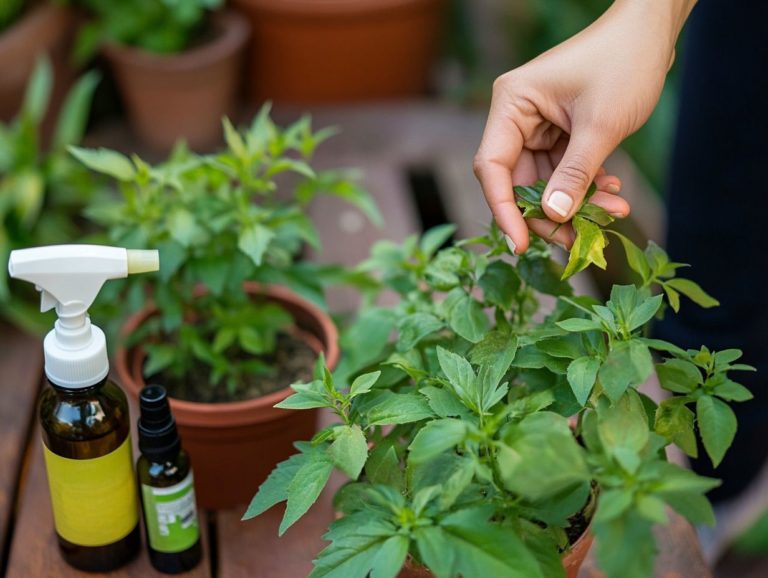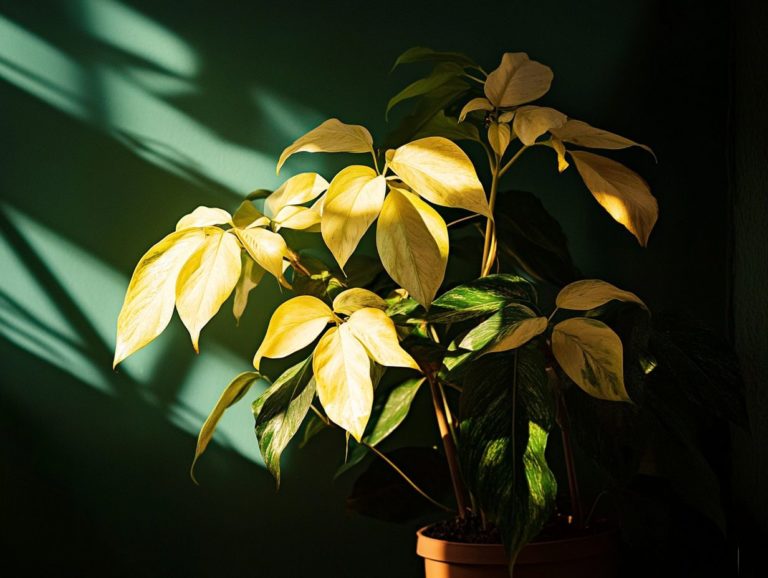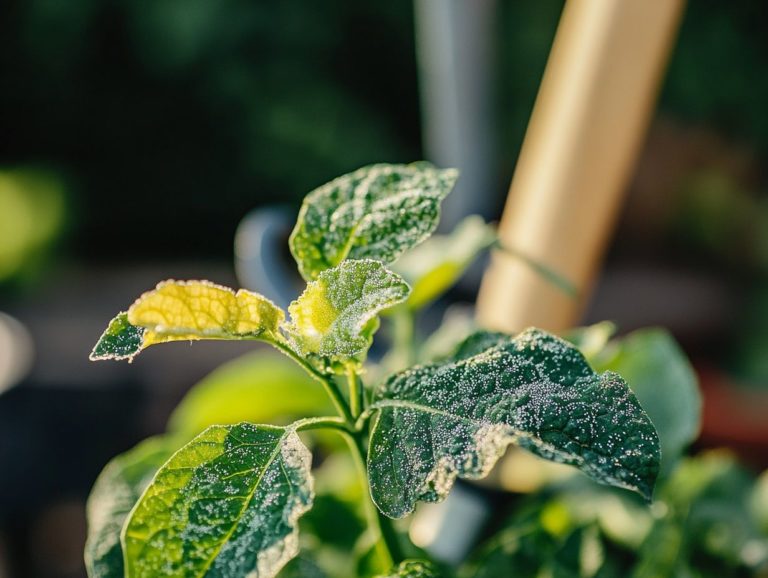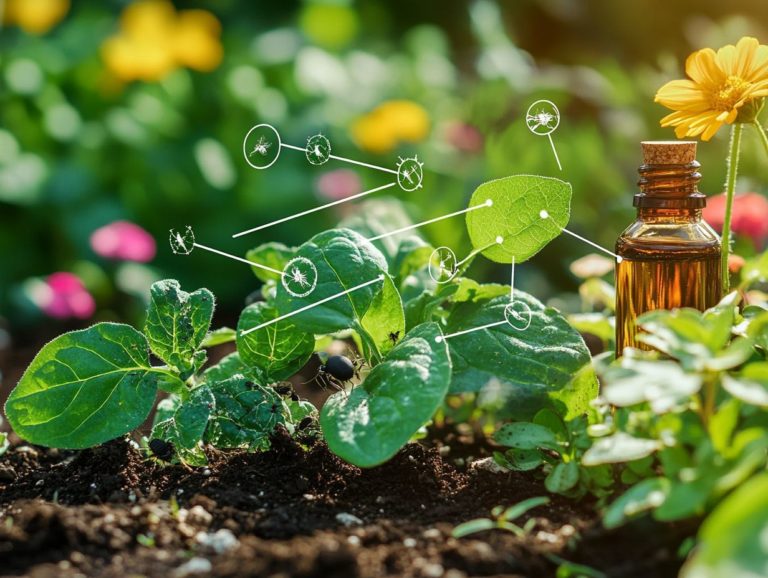5 Signs Your Plant Needs Repotting
Every plant lover understands that nurturing your greenery involves more than just watering and basking them in sunlight. Repotting is essential for maintaining the health and vitality of your plants.
If you ve observed signs such as roots making a break for it through drainage holes or leaves starting to wilt, it may be time to provide your plants with a fresh abode.
This article outlines five crucial indicators that signal your plant is ready for repotting, along with practical tips for doing it effectively. Explore the best practices and common pitfalls to steer clear of, ensuring that your leafy companions continue to thrive for years to come.
Contents
Key Takeaways:
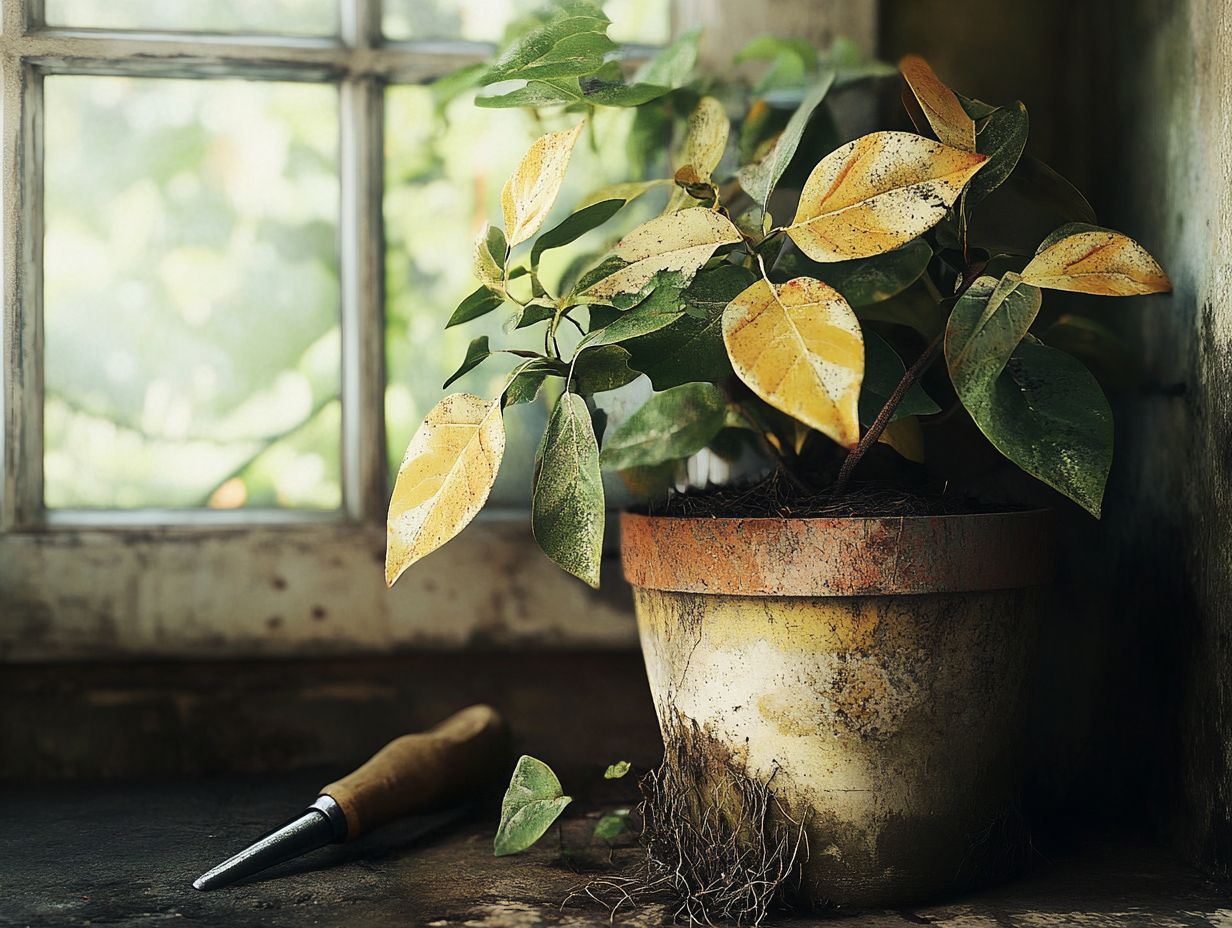
- Check for roots growing out of drainage holes to determine if your plant needs repotting.
- Wilting or yellowing leaves can indicate nutrient deficiency, suggesting your plant may need repotting.
- Stunted growth signals that your plant has outgrown its current pot and needs repotting.
1. Roots Are Growing Out of the Drainage Holes
When you see roots pushing through the drainage holes of your pot, it’s a clear sign that your plant’s roots have become cramped. This is your cue to repot and ensure your plant enjoys healthy growth and a thriving root system.
Pot-bound conditions can lead to serious issues. Root crowding occurs when the roots compete for space and nutrients, ultimately limiting your plant’s overall health. When confined, these roots may also be vulnerable to root rot, which can harm your plant when roots sit in water and decay.
Selecting the right pot size and soil mix is crucial for optimal plant care. A pot that’s too small can stunt growth. The right soil mix will provide essential drainage and aeration, allowing those healthy roots to flourish. Addressing these elements cultivates a robust and vibrant garden.
2. Wilting or Yellowing Leaves
Wilting or yellowing leaves on your houseplants indicate nutrient deficiencies or improper watering. Several factors contribute to these symptoms, with overwatering frequently being the main offender. Excessive moisture can suffocate roots, leading to yellowing as the plant struggles to absorb essential nutrients. Compacted soil can also limit airflow, creating stress for the roots.
To troubleshoot these issues, evaluate your watering routine. Using a moisture meter can help you determine whether the soil is genuinely dry enough for another soak. Ensure proper drainage and occasionally aerate the soil to significantly enhance your plants’ health, encouraging vibrant foliage and robust growth.
3. Stunted Growth or Lack of Growth
If your plant is struggling with stunted growth or shows no signs of growth, it s a clear signal that its root system might be confined by an inadequate pot size or poor soil quality. Repot your plant now to give it a fresh start!
Recognizing the signs of stunted growth is crucial. You might see yellowing leaves, delayed flowering, or a lack of new growth. The health of the root system is paramount. Using a fresh potting mix rich in nutrients and ensuring proper drainage prevents waterlogging, ensuring that roots don t suffocate or decay.
When you repot your plant into a larger container filled with fresh soil, you set the stage for better aeration and nutrient absorption. This revitalizes your plant s health and creates an environment where it can truly thrive.
4. Soil Dries Out Quickly After Watering
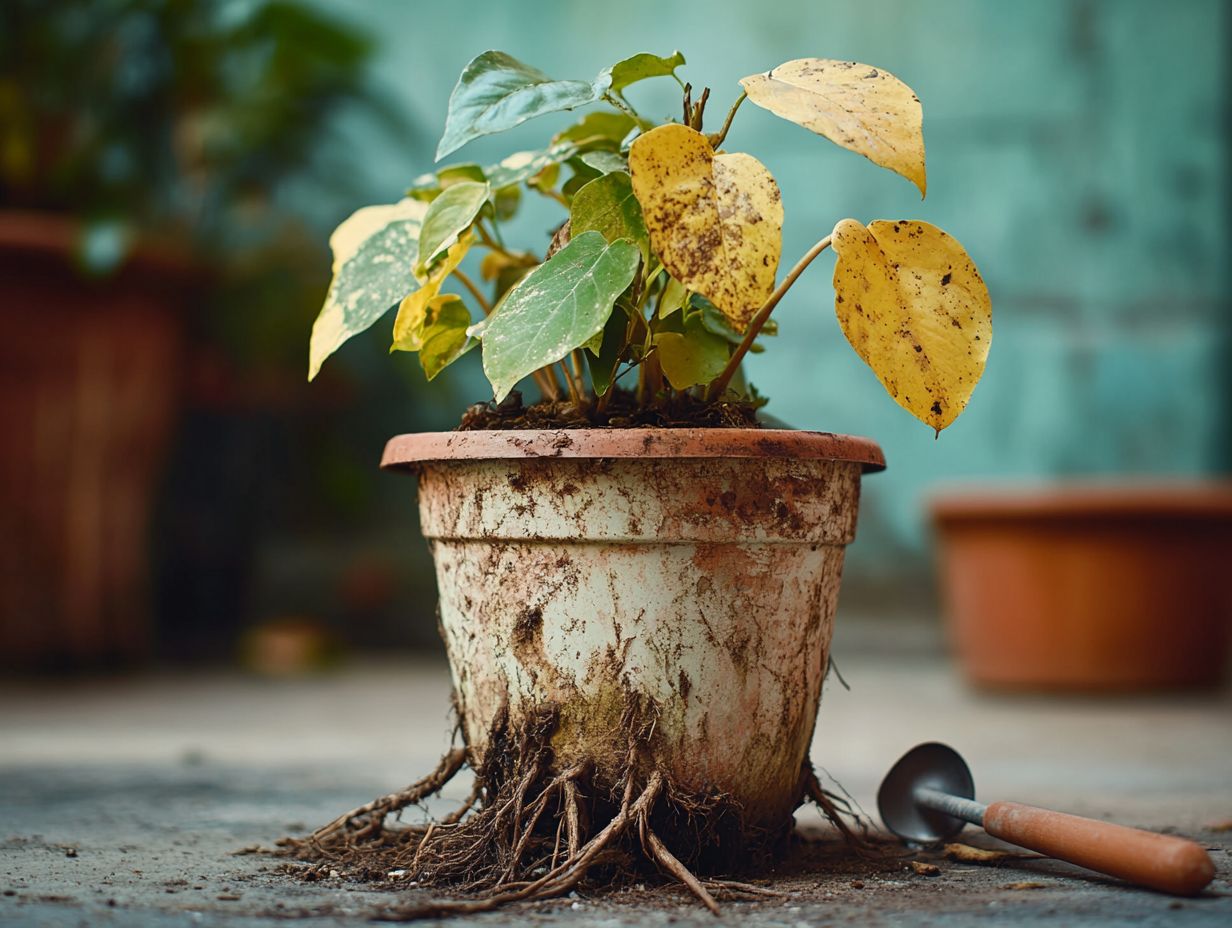
If your plant’s soil dries out quickly after watering, it usually indicates poor soil quality or compaction. Both can hinder water drainage and nutrient absorption.
Factors like a pot that’s too small can limit root growth and moisture retention. Compacted soil creates a dense environment, making it hard for water to penetrate.
To solve this, use a balanced potting mix enriched with organic matter, like compost. Adding mulch helps retain moisture.
Regularly check moisture levels and ensure pots have drainage holes for optimal plant health.
5. Plant Becomes Top-Heavy or Tips Over
Is your plant leaning or tipping over? This is a clear sign that the pot size may be inadequate. Repotting is important for plant stability.
A pot that s too small hampers root growth and soil stability, leading to a lean or toppled plant. Factors like soil type, container drainage, and the overall environment play significant roles here.
To solve this problem, choose a container that allows for ample root expansion while being heavy enough to anchor the plant securely.
During the repotting process, gently loosen the roots and incorporate fresh soil. Use stakes or ties to keep the plant upright if necessary. This will help your plant thrive without tipping over.
When Is the Best Time to Repot a Plant?
The best time to repot a plant is usually in spring, during its seasonal growth period. This timing helps your plant acclimate to its new surroundings and benefit from fresh soil and nutrients.
Look for signs of growth, like new leaves or vigorous growth that serves as your cue for a repotting session. Additionally, keep an eye out for signs your plant needs more light, such as roots pushing through drainage holes or soil that struggles to retain water, indicating your plant may be root-bound, which means the roots have no more room to grow.
Select a pot that is slightly larger with excellent drainage. Pair it with a high-quality potting mix that provides ample nutrients. After repotting, water your plant thoroughly and place it in indirect sunlight to help it settle into its new home comfortably.
What Are the Steps to Repotting a Plant?
Repotting a plant involves essential steps, including selecting a new pot, using fresh potting mix, and pruning roots if necessary to promote a robust root system.
First, assess whether the current pot is too snug for your plant’s roots. Look for signs like roots peeking out of drainage holes or stunted growth. For more detailed information, check the top signs of indoor plant overcrowding. Once you identify it’s time for an upgrade, ensure the new container is only slightly larger—ideally one size up—to avoid overwatering.
Next, prepare a high-quality potting mix that balances drainage and moisture retention. When handling the roots, gently disentangle any circling roots and trim away dead or damaged ones. If you’re unsure about whether your plant needs repotting, check out this guide on how to know if your plant needs repotting. This thoughtful approach will encourage healthier growth in your plant’s new environment.
Discover the Best Potting Mixes for Your Plants!

Understanding the different types of potting mixes is essential for selecting the ideal soil that meets the specific nutrient and water needs of your indoor plants. This ensures they thrive beautifully. Each mix comes with its own unique characteristics.
For example, peat-based mixes are overflowing with organic matter, making them perfect for moisture-loving plants like ferns and tropical species. On the other hand, soil-less mixes typically crafted from a blend of perlite and vermiculite offer exceptional aeration and drainage. This is just what succulents and cacti crave in their dry habitats.
Organic mixes, enriched with compost and natural additives, not only boost soil fertility but also align with sustainable gardening practices. By grasping these distinctive properties, you can create optimal growth conditions for your plants and set them up for success.
How Often Should a Plant Be Repotted?
The frequency of repotting your plants largely depends on their growth rate, size, and specific growing conditions. Fast-growing houseplants typically need repotting every year or two.
Recognizing the right moment to repot can be crucial for your plant’s vitality. Pay attention to root growth; if you see roots visibly pushing through the drainage holes or spiraling around the pot, it’s a clear sign your plant needs a more spacious environment. Additionally, be aware of signs your indoor plant needs more light to thrive.
If your plant seems stunted or its leaves are browning despite your best care efforts, it might be feeling a bit cramped. Monitoring the soil condition is essential; if it dries out faster than you can say green thumb and fails to retain moisture, it might be time to repot with fresh soil to enhance drainage and nutrients!
Always opt for a pot that is just one size larger. This way, you won t overwhelm your plant with an oversized new home.
Avoid Common Mistakes When Repotting a Plant!
Avoiding common mistakes is key to keeping your plants happy and healthy! When repotting, avoid using the wrong pot size, ensure adequate drainage, and handle the root system carefully to prevent significant challenges for your plant’s well-being.
Errors in this process can severely impact a plant’s ability to thrive, potentially leading to stunted growth or even death. Selecting a pot that is too large might hold onto excess moisture, heightening the risk of root rot, while a pot that s too small can restrict root development.
It’s also crucial to choose a potting mix tailored to your plant’s specific needs. Different species have varying requirements for water retention and aeration. When handling the root mass, be gentle; untangling it without causing damage is vital to minimize stress from moving. To avoid issues, watch out for the top 5 signs of indoor plant distress, especially for roots that are cramped in their pot.
Ongoing maintenance, such as keeping an eye on moisture levels and adjusting light exposure after repotting, will further support your plant’s successful acclimatization to its new home. This ensures a thriving growing environment.
How Can Repotting Benefit a Plant’s Health?
Repotting can immensely enhance your plant’s health by providing fresh, nutrient-rich soil, improving drainage, and creating optimal growing conditions that encourage robust plant growth and vitality.
When your plant becomes root-bound, its growth can hit a wall due to limited access to essential nutrients and water. To ensure your plant thrives, look for the top 10 signs of a healthy indoor plant. By transferring it to a larger pot filled with high-quality potting mix, you can alleviate these issues and allow the roots to spread out and absorb vital resources more effectively.
Implementing good potting practices enhances aeration and significantly reduces the risk of root rot and other moisture-related concerns. This not only fosters a resilient root system but also promotes vibrant foliage and blossoms, resulting in a healthier, more flourishing plant overall ideal for indoor gardening and houseplant care.
Frequently Asked Questions

What are the 5 signs that my plant needs repotting?
The leaves are wilting. Roots may be growing out of the drainage holes.
Soil dries out quickly. The plant may look top-heavy.
Roots circling the pot are clear signs that repotting is needed.
Can I repot my plant if it’s not showing all 5 signs?
Yes, you should repot your plant every 1-2 years. This refreshes the soil and provides more space to grow.
How do I know if my plant is root-bound?
If roots tightly circle the pot and there’s little soil left, your plant is likely root-bound. It needs repotting.
What should I do if my plant is showing 3 out of 5 signs?
Repot your plant to prevent further stress and give it room to grow. Use a pot slightly larger than the current one.
What type of soil should I use when repotting my plant?
Use a well-draining potting mix, which is a special soil blend for potted plants. This mix should meet the specific water drainage needs of your houseplants.
How often should I repot my plant?
You should definitely repot your plant every 1-2 years. This depends on the plant’s growth, needs, and seasonal patterns.


